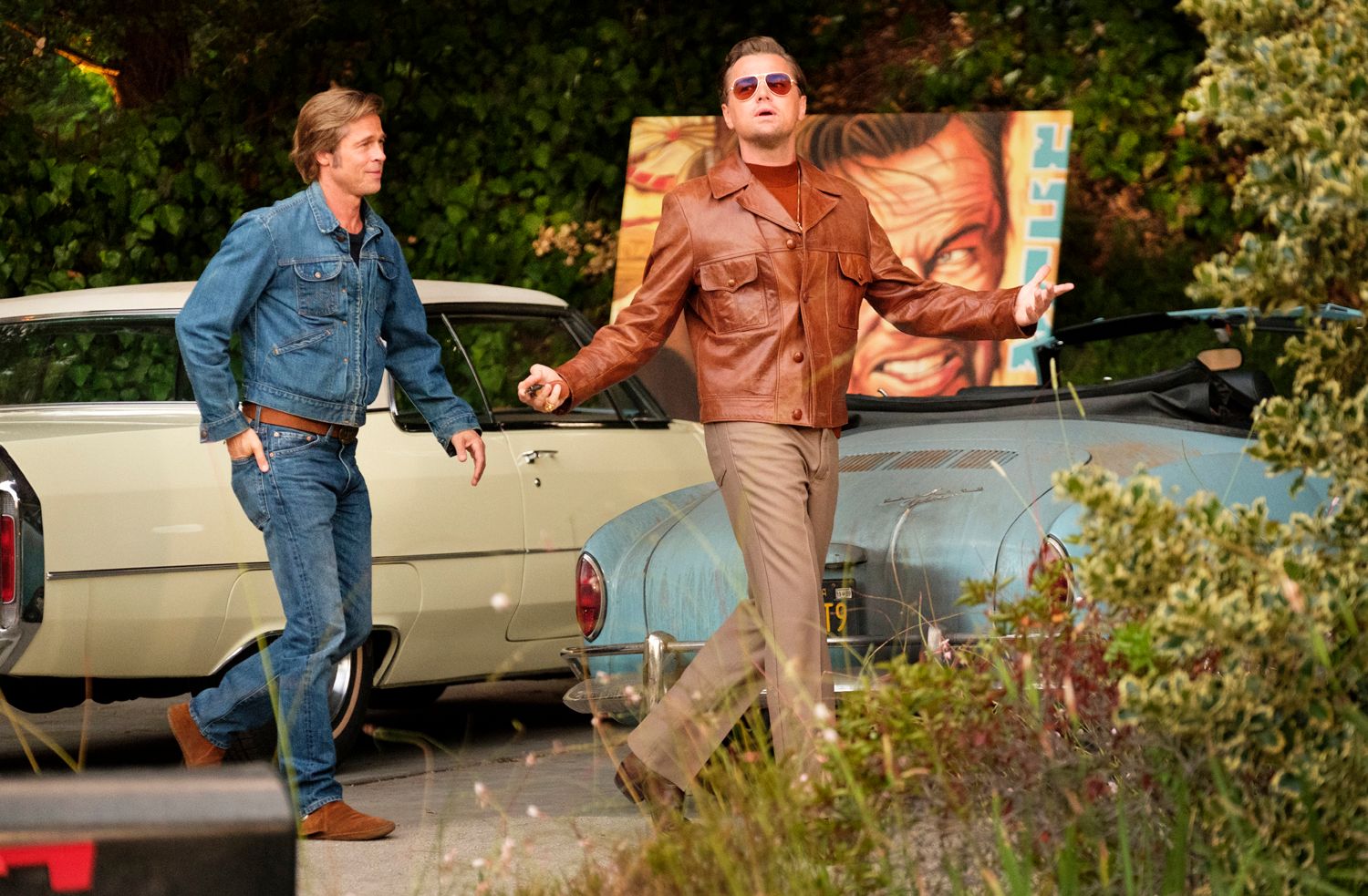It’s the dead end he’s contemplating here, simultaneously eulogizing and criticizing ways of life that were rapidly aging, and luxuriating in reviving the period detail his crew carefully recreates. The two men at the center are often pathetic figures of curdled cool — flubbing lines or ruining opportunities on set, wallowing in self-pity, shrugging off bad behavior — with flashes of their potential charms, never more than when behind the wheel of a roaring cool car zipping down the streets of Hollywood. They cycle through bemused or prickly encounters with a large, memorable ensemble of one- or two-scene wonders (Al Pacino! Kurt Russell! Dakota Fanning! Timothy Olyphant! Many more!) as one or the other hangs around a Western set full of cast and crew or an old Movie Ranch full of cultists. It's by turns silly, sad, and somewhere between. This movie carries itself with a relaxed confidence, most beguilingly wearing its heaviness lightly and its lightness heavily. Meanwhile Tate floats through her brief sequences interspersed as a bittersweet specter of a possible future, glowing happily, gazing at herself on the movie screen with delight and, later, cradling her pregnant belly. The movie — overall low-key amused, drunk on movie lore love, and loaded with scratchy needle drops, booming car radios, the soft hum of tube TVs, and the click-clatter of a projector whirring to life — carries with it this ambiguous sadness. No matter the outcome, this whole way of showbiz is on the way out, a freewheeling turbulent decade dying and, so, too, eventually, the analogue pleasures will grow fleeting and fade. Fittingly, it’s a movie of big small pleasures, fleeting, fading.
Friday, July 26, 2019
What Has Been: ONCE UPON A TIME...IN HOLLYWOOD
Quentin Tarantino’s Once Upon a Time...in Hollywood is a conjoined pair of rambling character sketches with a layer of true crime dread for a counterpoint, then oodles of his relaxed nostalgia and affectionate irony slathered on top. No one can construct a scene like him, overflowing with crackling dialogue and with every personality instantly memorable. Then there’s the cinephile, nearly scopophilic, pleasure of the way his films look and feel, with the camera’s long smooth moves on cranes and tracks, always in the right place, and the crisp, smooth flavor of the edits at unexpectedly apropos times. This one unfolds and unfolds and unfolds, incident following incident and who really knows where this interesting thing’s going. Only the true life historical references hint at a likely gruesome end. It’s 1969 in Los Angeles. We follow a melancholic, alcoholic has-been actor (Leonardo DiCaprio), once a TV cowboy lead who could’ve been a movie star, but has ended up in the last dregs of a dying studio system going paycheck to paycheck as a villain-of-the-week on any show that’ll have him. Between jobs he drinks with his old buddy and stunt double (Brad Pitt), who’s also his driver, handyman, and sometimes roommate. Next door is a new neighbor, and a reminder that showbiz stardom is always pulling in and elevating someone younger while pushing aside old news stars who can’t make it. She’s new It Girl Sharon Tate (Margot Robbie), flush with new success. The name Tate will make anyone familiar with her eventual murder know this loose construction of scenes set in the twilight of a rapidly curdling Sixties is on its way to a dead end. Knowing, too, that Tarantino is known for staging spectacular suspense and violence, and has a penchant for going the extra ahistorical mile — like blowing off Hitler’s head in Inglorious Basterds or staging a one-man slave rebellion in Django Unchained — there’s an added suspense in wondering how far he’ll take his depiction.
Subscribe to:
Post Comments (Atom)


No comments:
Post a Comment